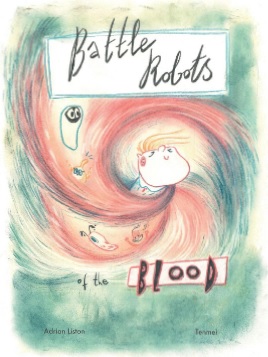Flemish scientists find cure for rare immune disease
 Thursday, April 21, 2016 at 8:46AM
Thursday, April 21, 2016 at 8:46AM A long wait
The disease – known as PAAND – causes severe skin lesions, muscle pain and general exhaustion. It first came to light about 10 years ago, when paediatric rheumatologist Carine Wouters (pictured right) was confronted with the case of a 13-year-old boy who was brought to the emergency department at Leuven University Hospital.
“Because of a cardiac muscle infection, the boy suffered from heart problems, but we quickly realised that the condition was part of a broader auto-inflammatory disease,” says Wouters.
To her amazement, the doctor soon discovered that other members of the young patient’s family were exhibiting similar symptoms. “But the cause remained unknown,” she says.
Unbearable pain
The boy’s father, who prefers to remain anonymous, has suffered from the same mysterious disease for most of his life. “Since I was five, I have had severe muscle pains, and I’ve suffered from extreme exhaustion,” he says. “Sometimes, I couldn’t even stand up and had to stay home from school for days, just to recover.”
He eventually finished school and found a job, but the condition made his career as a truck driver no less difficult. “The older I got, the more frequently I had to pull over to the side of the road and rest for a few hours,” he says.
The pain was so unbearable, he often couldn’t sleep through the night. As more health problems accumulated, the now 50-year-old man was forced to quit his job.
Sometimes, I couldn’t even stand up and had to stay from school for days, just to recover
Altogether, 12 members from three generations of the West Flemish family are afflicted with the disease. Until now, doctors could only ease their suffering with anti-inflammatory drugs and painkillers.
Genetic mutation
The breakthrough discovery of PAAND is the result of an extensive DNA comparison between the patients’ blood and that of their family members who are not affected by the disease.
The study was led by KU Leuven professor Adrian Liston, who also works at Flanders’ life sciences research institute VIB. Liston’s team collaborated with scientists from the Walter and Eliza Hall Institute in Melbourne, Australia.
The researchers traced the cause to a mutation of a gene known as MEFV. They determined that the mutation tricks the body into responding to a bacterial skin infection, even if there isn’t one. The response causes the skin to produce an inflammatory protein called interleukin-1 beta, which causes skin lesions, fevers and pain.
“If you have the flu, the fever and exhaustion you experience are the result of your immune system putting a lot of energy into battling the infection and not having enough energy left to allow you to function normally,” Liston explains.
With PAAND, he continues, “the immune system diverts much of that energy into fighting an infection that isn’t actually there, with disastrous consequences”.
Only one of the parents needs to carry the mutation for the disease to affect their children, though it isn’t necessarily passed on to every child.
The cure
“These insights were made possible because DNA analysis has become more innovative and affordable,” explains Liston. “We also couldn’t have done it without the collaboration with our colleagues abroad.”
Once they understood how the disease operates, the scientists started looking for a treatment. They found it in a drug called anakinra, also known under the brand name Kineret. While the drug is used in treating rheumatoid arthritis, Liston found it also has the ability to block the protein that causes PAAND.
We hope that the discovery will improve the quality of life for many other people in Flanders and abroad
The medication is now being tested on five members of the family from West Flanders, including the father. “I hope the drug can make our lives more normal,” he says.
For the time being, his son is recovering from a second heart transplant and cannot take the medication. The scientists are planning to involve him and other patients at a later stage.
Dr Wouters, who has stood by the Flemish family over the past 10 years, is happy that their resilience has finally been rewarded. “We hope that the discovery will improve the quality of life for many other people in Flanders and abroad,” she says. Doctors in France and Lebanon have already indicated that they also have patients with PAAND.
The next steps
The treatment was first carried out in the UK because the country’s health-care system reimburses the drug anakinra. For the tests on Flemish patients, KU Leuven researchers negotiated directly with the drug’s manufacturer, the Swedish company Orphan Biovitrum.
We know about 6,000 rare diseases, and more innovative techniques could help us to identify new ones
The two scientists have called on Belgium’s federal health minister Maggie De Block to focus more attention on diseases like PAAND. “Rare diseases are not rare,” Wouters says. “We know some 6,000 of them, and more innovative techniques could help us to identify new ones.”
According to Liston, more newborn babies should also be screened for immune system deficiencies. This, he says, could help prevent medical conditions later in life, which “not only affect the person’s overall health, but result in high costs to the social security system”.
 Liston lab,
Liston lab,  Medicine,
Medicine,  immunology
immunology 





Reader Comments